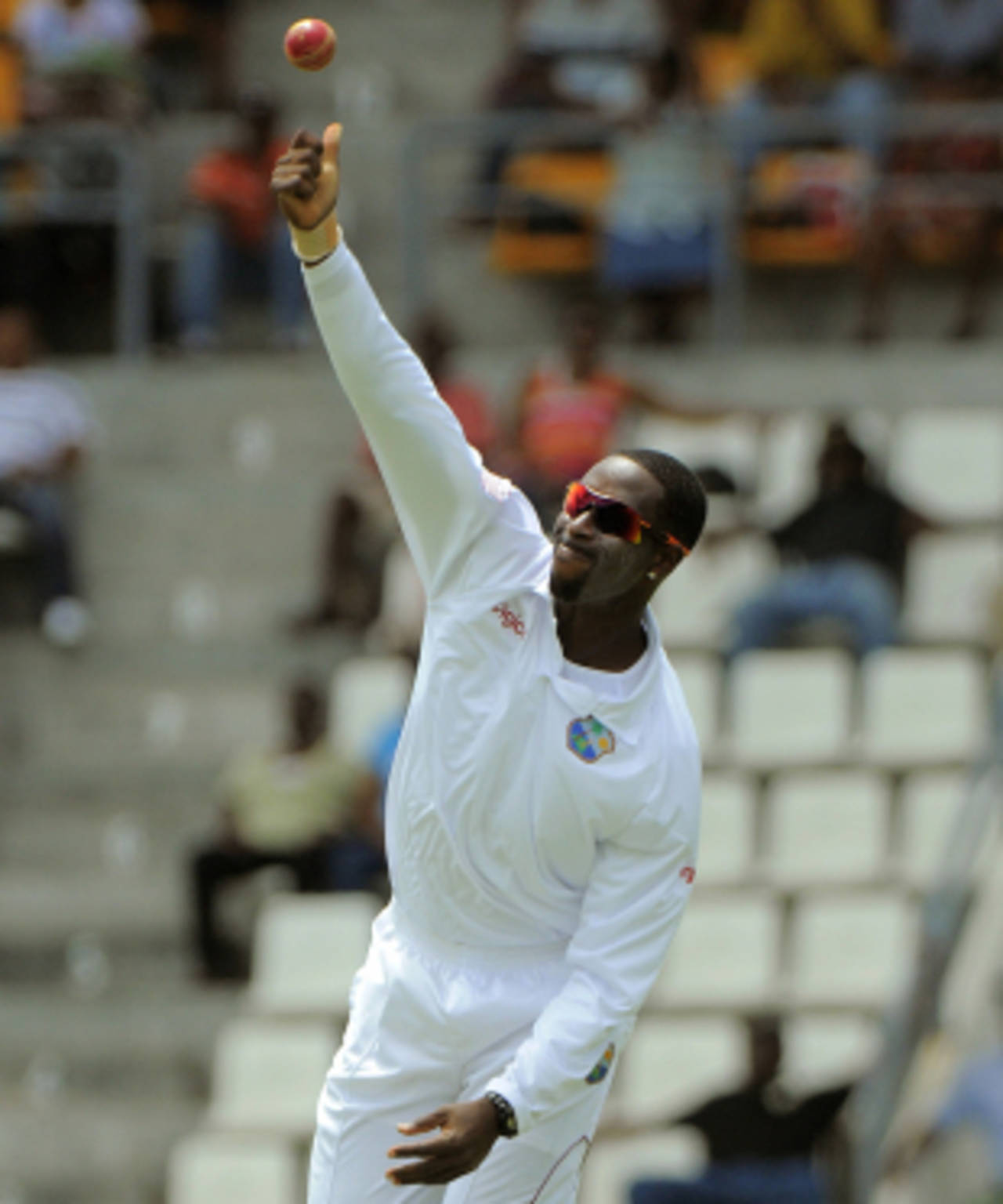Shillingford case has WI in a spin
The fact that Shane Shillingford has been suspended a second time raises questions about the set-up in the Caribbean. If they could not fix him the first time, what chance of it working now?
Andrew McGlashan
17-Dec-2013

Having been reported before, in 2010, and fought his way back, can Shane Shillingford do it a second time? • WICB Media Photo/Randy Brooks
There can be few phrases more emotive in cricket than 'chucker'. Despite the modern limits set down to allow for some bending of the elbow in delivery it remains a damaging label. That, effectively, is what Shane Shillingford woke up to this morning as, for the second time, he was suspended from bowling at international level due to an illegal action.
There is a lot of ICC speak involved in the findings and media release, but the outcome of the tests in Western Australia are in fact worse than he was initially reported for. The match report from the umpires and referee after the Mumbai Test in November cited Shillingford's doosra as the main cause for concern (a delivery which former Australia spinner Ashley Mallett believes can't be bowled legally), but his offspinner has also been ruled to breach the 15-degree limit.
"Dejected," was how Richie Richardson, the West Indies team manager, described Shillingford on Tuesday. You have to ask whether having been reported before, in 2010, and fought his way back he can do it a second time. It would test the mental resolve of anyone, particularly as his stock delivery is also a problem. The questions and uncertainty will never go away.
There have been dodgy actions since the year dot and there will be more in the future. There is a school of thought they are now more prevalent than ever, although that could be an outcome of the forensic TV evidence now available. The ICC's 15-degree marker, brought in on the basis that extensive testing show it was impossible to bowl without any degree of flexing, was laid down because anything less was said to not be discernible with the naked eye .
The numbers for Shillingford's most recent testing have not yet been made public, but in 2010 he was found to reach on average 17 degrees. Only two degrees, but it makes a huge impact on the bowler.
As Ottis Gibson said earlier in the week, Shillingford is not the only current player with an action to raise eyebrows yet, at the moment, he is the only one who has had his career halted; his livelihood threatened. "Well, if that's the view of a lot of people around the world maybe the authorities need to look at that," was Richardson's diplomatic response to suggestions of other bowlers who need to be scrutinised. The WICB is still studying the detailed findings given to them by the ICC and there is a sense that they want to say more on the issue.
However, the fact that Shillingford has been suspended a second time also raises questions about the set-up in the Caribbean. If they could not fix him the first time, what chance of it working now?
In the current era, West Indies are producing a decent line of spinners - both orthodox and unorthodox - but it is an area underserved by coaching. On the current tour of New Zealand, despite spin being a key part of West Indies' squad, there is no spin-bowling representative in the coaching group. This is not just the case with West Indies, but they are one of the stark examples. And because spin was not a major part of their cricket in the 1980s and 1990s there are not many homegrown role models to utilise.
New Zealand, for example, don't have a full-time spin coach but can call on Daniel Vettori's experience. South Africa spotted it as an area of weakness and now use Claude Henderson.
It was a concern raised by Gibson earlier this year when Devendra Bishoo, the legspinner, had suffered an alarming loss of form. "One of the things that has disappointed me since I have been appointed West Indies head coach - and this is through no fault of anyone - is that the fast bowlers have had a lot of support and we had a fast bowling clinic - but we haven't had any specialist training for spinners."
Saqlain Mushtaq helped run a spin-bowling camp that Bishoo attended, but one camp is not the same as having regular support. Funding is an issue for West Indies cricket, but if spin is going to continue to play such a key role in their plans - and the nature of pitches in the Caribbean suggests it will - then there is a desperate need to find the money.
And not just at the higher level, either. Shillingford is 30 years old so has been with the Caribbean cricket structure for a long time, yet it's only since he has reached international level that his problems have come to fore. Whether he has been harshly treated or not, the point remains that fundamental issues such as a bowling action need to be dealt with early.
It will take a mighty effort for Shillingford to recover from this latest setback. You hope he does, and never has another problem again, but West Indies need to ensure the future generation have the support in place to nip any problems in the bud.
Andrew McGlashan is an assistant editor at ESPNcricinfo